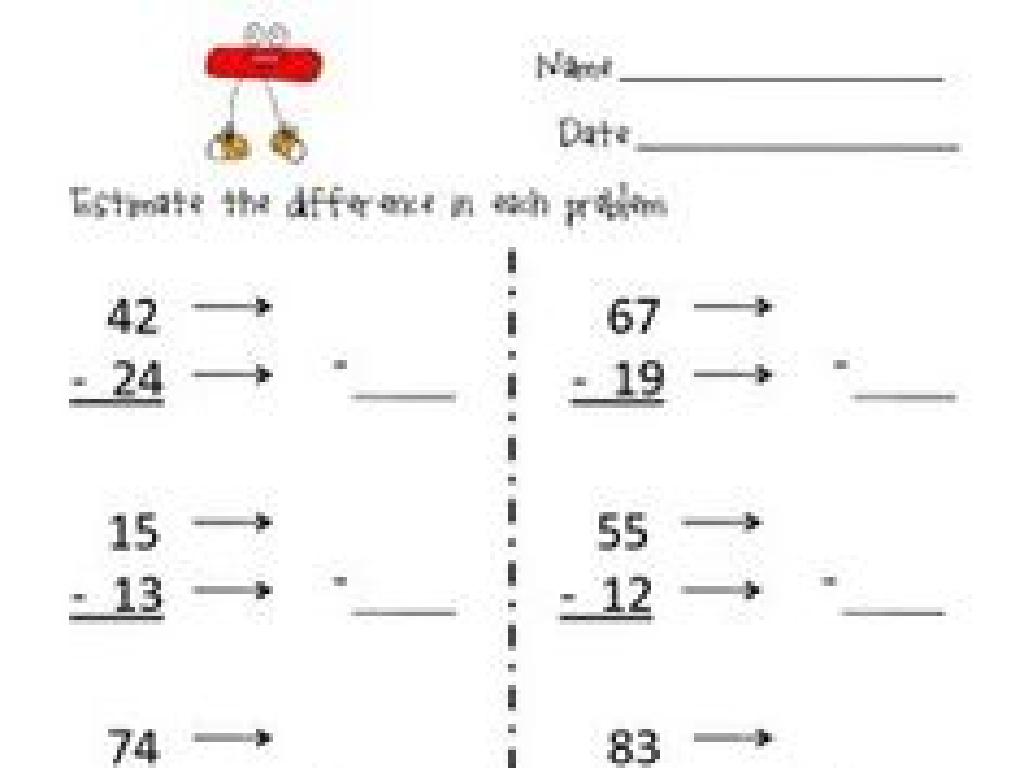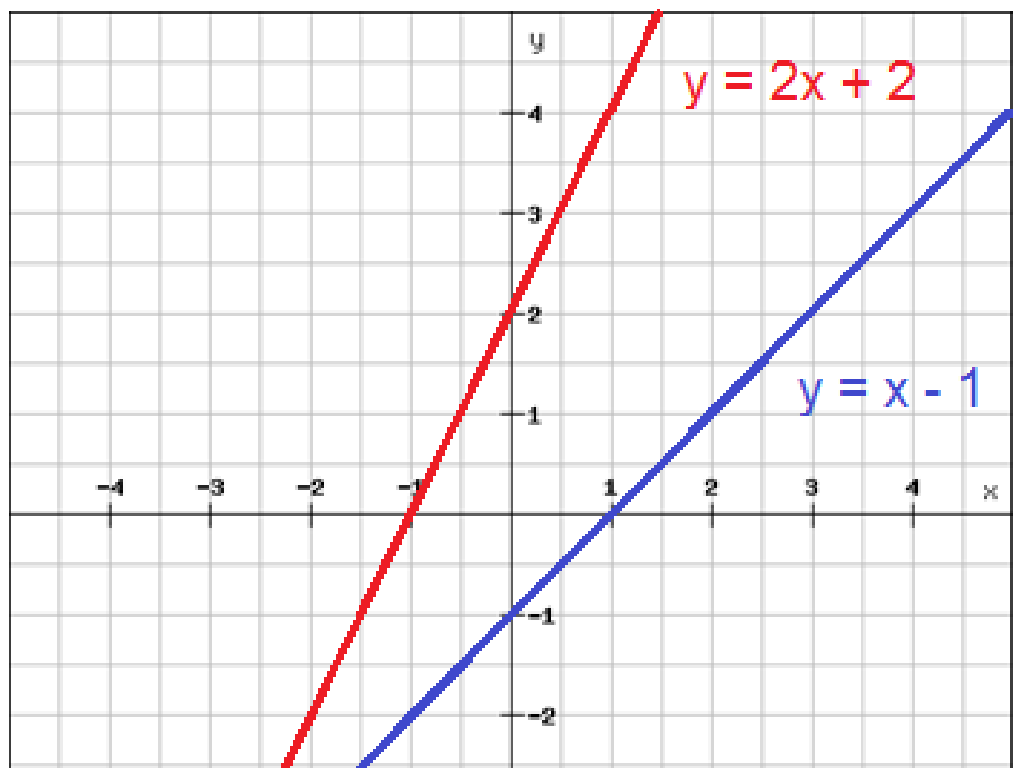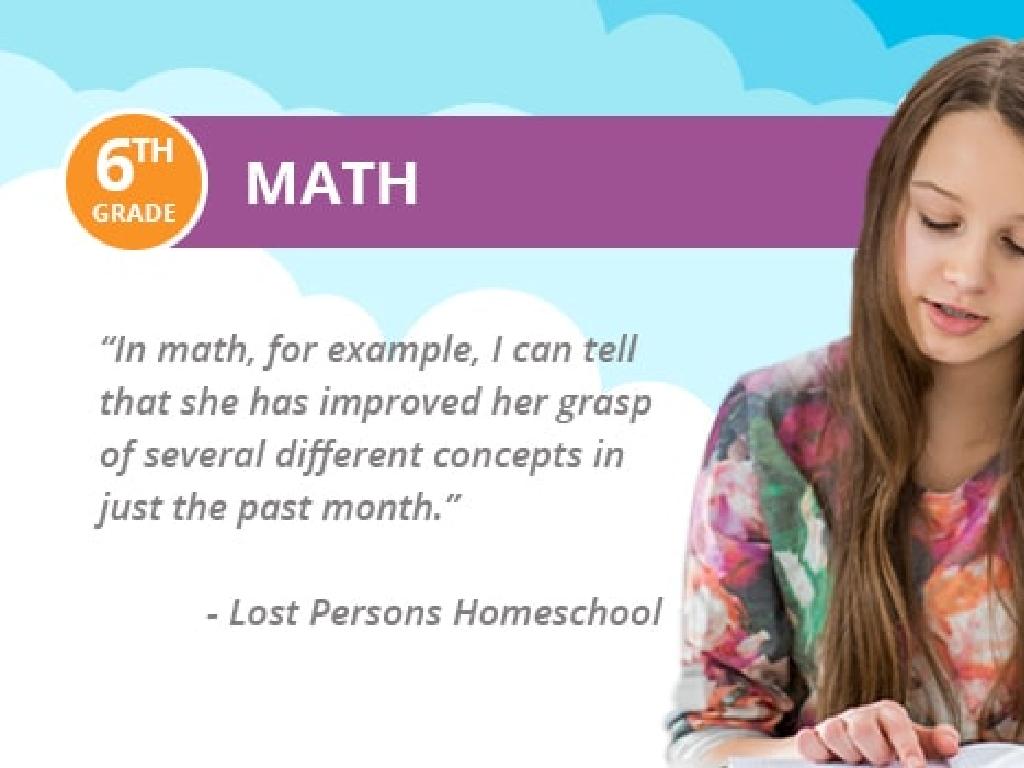Create Scatter Plots
Subject: Math
Grade: Fifth grade
Topic: Data And Graphs
Please LOG IN to download the presentation. Access is available to registered users only.
View More Content
Today’s Adventure: Scatter Plots!
– What is a scatter plot?
– A graph with points plotted to show a possible relationship between two sets of data.
– Visualizing data with scatter plots
– Each point represents a data pair on the horizontal and vertical axes.
– The importance of graphs
– Graphs turn numbers into pictures that help us understand and use data.
– Scatter plots in daily life
– Examples: Weather patterns, sports scores, or class test results.
|
Begin the lesson by explaining what a scatter plot is and how it represents data as points on a graph. Emphasize the role of the horizontal (x-axis) and vertical (y-axis) in plotting data pairs. Discuss how visualizing data helps us to see patterns and relationships more clearly. Highlight the significance of graphs in various aspects of everyday life, such as predicting weather, analyzing sports statistics, or tracking classroom performance. Provide real-world examples to make the concept relatable. Encourage students to think of situations where they have seen graphs used outside of school.
Exploring Scatter Plots
– What is a scatter plot?
– A graph showing the relationship between two variables.
– Points represent value pairs
– Each point on the graph is one set of data.
– Scatter plots reveal patterns
– Look for lines or curves that show how the variables relate.
– Understanding trends with plots
– Trends show how one variable changes in relation to another.
|
Introduce scatter plots as a graphical representation that illustrates the relationship between two different variables. Each point on the scatter plot represents a pair of values for these two variables. By plotting these points, we can begin to see if there is a pattern or trend, such as a positive or negative correlation, or if the variables are unrelated. Encourage students to think about how scatter plots might be used in real life, such as comparing the amount of time spent studying and test scores, or the relationship between the age of a car and its value.
Parts of a Scatter Plot
– Horizontal axis (x-axis)
– Vertical axis (y-axis)
– Data points intersection
– Where the values of x and y come together on the graph
– Title and axis labels
– Helps describe what the graph is about and what each axis represents
|
This slide introduces the basic components of a scatter plot, which is a type of graph used to show the relationship between two variables. The horizontal axis, or x-axis, typically represents the independent variable, while the vertical axis, or y-axis, represents the dependent variable. Data points are plotted on the graph where the x and y values meet, showing the intersection of the two variables. It’s crucial to include a title that clearly describes what the scatter plot is about, as well as labels for each axis to indicate what is being measured. In class, you can demonstrate creating a scatter plot using sample data and then have students practice with their own data sets.
Creating Our Scatter Plot
– Choose two variables to compare
– For example, height vs. shoe size
– Label the axes with the variables
– X-axis for one variable, Y-axis for the other
– Plot the data points on the graph
– Each point represents a data pair
– Analyze the pattern of the data points
– Look for trends, like a line going up or down
|
This slide is designed to guide students through the process of creating a scatter plot. Start by explaining the importance of selecting two related variables, such as height and shoe size, to compare. Emphasize the need to correctly label the X and Y axes with these variables for clarity. Demonstrate how to plot each pair of data on the graph accurately. Finally, teach students to observe the overall pattern formed by the data points to draw conclusions about the relationship between the two variables. Encourage students to ask questions and provide examples to ensure understanding.
Scatter Plots: Heights vs. Shoe Sizes
– Collect class height and shoe size
– Measure each student’s height and note their shoe size
– Plot points on X (Height) and Y (Shoe Size)
– Each point represents a student’s height and shoe size
– Analyze data for trends
– Do taller students have larger shoe sizes?
– Discuss findings with the class
|
This slide introduces students to the concept of scatter plots by using relatable data from their own class. Start by collecting the height in inches and shoe size of each student. Then, guide them to plot these points on a graph with the x-axis representing height and the y-axis representing shoe size. Once all data is plotted, lead a discussion to identify any visible trends, such as whether there is a correlation between height and shoe size. Encourage students to think critically about the data and what it might suggest. This activity will help them understand how scatter plots can be used to observe relationships between two variables.
Interpreting Scatter Plots
– Positive correlation explained
– When one thing goes up, so does the other, like age and height.
– Negative correlation explained
– If one thing goes up, the other goes down, like temperature and snow.
– Understanding no correlation
– Sometimes, two things don’t relate at all, like shoe size and grades.
– Analyzing scatter plots
|
This slide aims to help students understand the concept of correlation in scatter plots. A positive correlation means that as one variable increases, the other variable also increases, which can be seen in real-life examples like age and height – as children get older, they usually get taller. A negative correlation is the opposite; as one variable increases, the other decreases, such as the temperature outside and the amount of snow. When there’s no correlation, the variables don’t seem to affect each other, like a person’s shoe size and their grades in school. Encourage students to look for patterns in scatter plots and determine the type of correlation, if any. Provide them with practice scatter plots to analyze and interpret the correlation.
Class Activity: Crafting Scatter Plots
– Team up and gather data
– Create a scatter plot on paper
– Use graph paper to plot points representing your data
– Present your plot to the class
– Discuss observed patterns
– What do the points tell us? Are they close together or spread out?
|
This activity is designed to provide hands-on experience with scatter plots. Students should pair up and choose a topic that interests them, such as the relationship between study time and test scores, or hours of sleep and energy levels. They will then collect relevant data and use graph paper to create a scatter plot, plotting points that represent the data pairs. Once completed, each pair will present their scatter plot to the class and discuss any patterns they observe, such as clusters or trends. The teacher should circulate to provide guidance and ensure accuracy. Possible variations for different pairs could include different topics or data sources, such as surveys or measurements. This activity will help students understand how scatter plots can visually represent data and the importance of looking for patterns to interpret data.
Scatter Plots: Conclusion & Reflection
– Recap on scatter plots
A graph with points plotted to show a possible relationship between two sets of data.
– Uses of scatter plots
They help us see trends and make predictions.
– Share an interesting find
Each student shares one unique point they noticed during the activity.
– Reflect on today’s lesson
|
As we wrap up today’s lesson, let’s take a moment to reflect on what we’ve learned about scatter plots. We’ve seen how they can visually represent data and help us find patterns or trends. Scatter plots are particularly useful in predicting outcomes and understanding relationships between variables. Encourage each student to share one interesting observation from the scatter plot activity they completed. This not only reinforces their learning but also allows them to appreciate the diversity of data interpretation among their peers. As a teacher, listen to their observations and provide feedback, ensuring they understand the key concepts of scatter plots.






